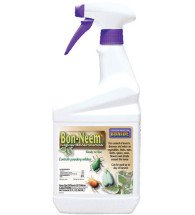Navigate the challenges of growing plumerias with ease using our ‘Plumeria Troubleshooting Guide.’
Leafhopper
Leafhopper – Pest
Leafhoppers are insects that feed on various fruits, vegetables, flowers, and woody ornamental hosts. Most leafhopper species have a specific preference for one or a few closely related plant species. Adult leafhoppers are usually slender, wedge-shaped, and less than or about equal to 1/4-inch long. They come in shades of green, yellow, or brown and are often mottled. While some species are brightly colored, others blend in with their host plant. Leafhoppers are active insects that crawl sideways rapidly or jump readily when disturbed. You can find both adults and nymphs and their pale cast skins on the underside of leaves.

Identification
Sometimes, it can be difficult to differentiate leafhoppers from aphids or Lygus bugs. You can spot leafhoppers or their cast skins by checking the undersides of affected leaves. Additionally, observe their movements; leafhoppers are faster than aphids, move sideways and can jump. Lygus bug nymphs are light green and also move much faster than aphids. You can identify them by their red-tipped antennae. On the other hand, aphids have two tubelike structures called cornicles protruding from their hind end. Leafhoppers have one or more long rows of spines on their hind legs and unique features on their heads, which distinguish them from most other insects they resemble.
The potato leafhopper, a type of leafhopper, commonly infests Plumeria.
Life cycle

Leafhoppers undergo incomplete metamorphosis during their development. The female leafhoppers lay tiny eggs in tender plant tissue, causing pimple-like injuries. These eggs start to hatch in mid-April, and wingless nymphs emerge and molt four or five times before maturing in about 2 to 7 weeks. Nymphs resemble adults, except they lack wings. Later-stage nymphs have small wing pads. There is no pupal stage. Leafhoppers overwinter as eggs on twigs or as adults in protected places like bark crevices. In regions with cold winters, leafhoppers may die during winter and migrate back from warmer regions in spring. Most species have two or more generations each year.
Damage
The potato leafhopper feeds by inserting its sucking mouthpart into the plant’s vascular tissue, sapping nutrients.
The plant expert Groves explains that the plumeria is most commonly affected by a condition called hopper burn, which is caused by the saliva of the leafhopper. This condition disrupts the plant’s vascular system, causing the leaves that have been fed on to curl up and turn necrotic.
Leafhoppers are tiny insects that feed on plant sap and can cause significant damage to plants. When they feed on leaves, the affected area may appear stippled, pale, or brown, and shoots may curl up and eventually die. You may also find black spots of excrement and cast skins on the leaves. While some species of leafhoppers can transmit plant diseases, this mostly affects herbaceous crop plants.
This is a must read article written by plumeira experts from Southern California. Link to pdf file leaf-hopper

Control for Leafhoppers
for Leafhoppers
Bon-Neem
Specially formulated to kill mites, aphids, whitefly and more on contact.
Tip: To increase the effectiveness of insecticidal soap, mix 1 quart of water with 1 tablespoon of isopropyl alcohol and 1 tablespoon of insecticidal soap. The added alcohol helps break down the waxy outer shell of insects, allowing the soap to penetrate and kill them more effectively.